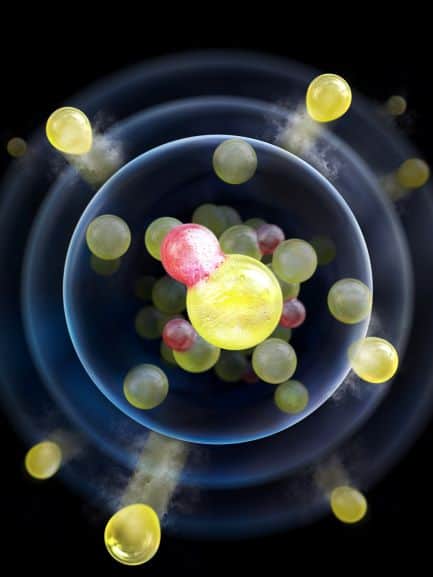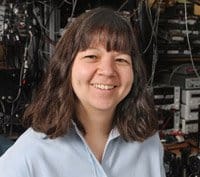
Cooling atoms to ultracold temperatures is a routine task in atomic physics labs, but molecules are a trickier proposition. Researchers in the US have now used a widely-applicable combination of methods to make molecules colder than ever before – a feat that could pave the way for applications in areas as diverse as high-temperature superconductivity and quantum computing.
In everyday life, we do not see the bizarre effects of quantum mechanics because the quantum states of the particles around us are constantly collapsing, or decohering, as they interact. At temperatures near absolute zero, however, some identical particles will simultaneously occupy the lowest energy quantum state available. This phenomenon is known as quantum degeneracy, and it was experimentally demonstrated in 1995, when groups led by Eric Cornell and Carl Wieman (then at the University of Colorado, Boulder) and Wolfgang Ketterle of the Massachusetts Institute of Technology (MIT) created the first Bose-Einstein condensates (BECs) with rubidium and sodium atoms, respectively.
Other groups have subsequently made condensates using other atomic species, and various techniques have been developed to cool atoms to quantum degeneracy. In one of the simplest methods, a sample of atoms is confined in a magnetic or optical trap. Hotter atoms with more kinetic energy are more readily able to escape, or evaporate, from this trap, so the remaining atoms become cooler. In another method, known as sympathetic cooling, one type of atom is cooled directly and allowed to thermalize with atoms of another type, thereby cooling them by extracting their kinetic energy.
More degrees of freedom, more problems
Physicists have also sought to cool molecules to quantum degeneracy, since their physics is richer and more complex than that of unpaired atoms. “Molecules have rotations and vibrations, and if you choose your molecule wisely, it can have a very strong electric dipole moment,” explains Florian Schreck, a physicist at the University of Amsterdam in the Netherlands. “That allows molecules to have very strong dipole-dipole interactions, which gives them huge potential for quantum simulation of spin-lattice systems, high-temperature superconductors, topological systems…an endless list of theory proposals.”
Unfortunately, this complexity also makes molecules more difficult to cool. The sympathetic cooling process, for example, relies on elastic collisions to transfer energy between particles. Molecules, however, can easily undergo inelastic collisions that release energy from one of their multiple rotational, vibrational and other degrees of freedom. This release of internal energy leads to a large increase of kinetic energy, and usually ends with the molecule being lost from the trap.
Although molecules have been created in BECs from paired atoms of the same atomic species since the early 2000s, it was not until 2019 that an equivalent milestone was reached for polar molecules. In that work, Jun Ye and colleagues at JILA in Boulder, Colorado cooled potassium and rubidium atoms to quantum degeneracy, then brought them together and tuned the magnetic interaction between them using a so-called Feshbach resonance. This tuning made it energetically favourable for the atoms to form a covalent bond.
Colder and colder
In the new work, Ketterle and colleagues at MIT adopted a more general – and thus potentially more widely applicable – approach. They began by using a Feshbach resonance to create sodium-lithium molecules in an optical trap formed at the focus of a laser beam. The molecules in this optical trap “feel” the trapping potential much more strongly than the atoms from which they are formed. They therefore exchange their potential energy for kinetic energy, becoming hotter than the unpaired sodium atoms in the process. However, by placing the molecules in stretched spin states (in which the electronic and nuclear spins are both aligned with the applied magnetic field) the researchers strongly suppress the inelastic collisions that would otherwise have ejected the molecules from the trap. This allows them to let the molecules thermalize with the colder atoms until the system reaches thermal equilibrium at a temperature of 2.23 μK.
To get colder still, the researchers utilize the weaker trapping potential felt by the atoms. “We decrease the power of the optical trap so that the most energetic atoms leave it,” explains Hyungmok Son, a PhD student in Ketterle’s group at the Harvard-MIT Center for Ultracold Atoms and the paper’s lead author. “The atoms left in the trap collide among themselves and get colder. These colder atoms collide with the molecules to do further cooling, and this is an ongoing process.”
Upgrades required
The researchers eventually cooled their sample to 220 nK, and Son says that they should be able to cool it to quantum degeneracy if they can trap more sodium atoms with their molecules. “That will require some technical upgrades to our experimental setup,” he adds. “We’re trying to get more powerful lasers.” In the meantime, the researchers intend to study how the cooling power changes as they vary the magnetic field to ascertain whether it matches theoretical predictions.

Quantum gas of ultracold polar molecules is a first
Schreck, who was not involved in the work, calls the technique “very powerful” and says it should work for other molecules, too. “There is no real limit to it,” he says. “With further improvements on the initial atom numbers they should be able to push this all the way to quantum degeneracy.”
The research is published in Nature.



